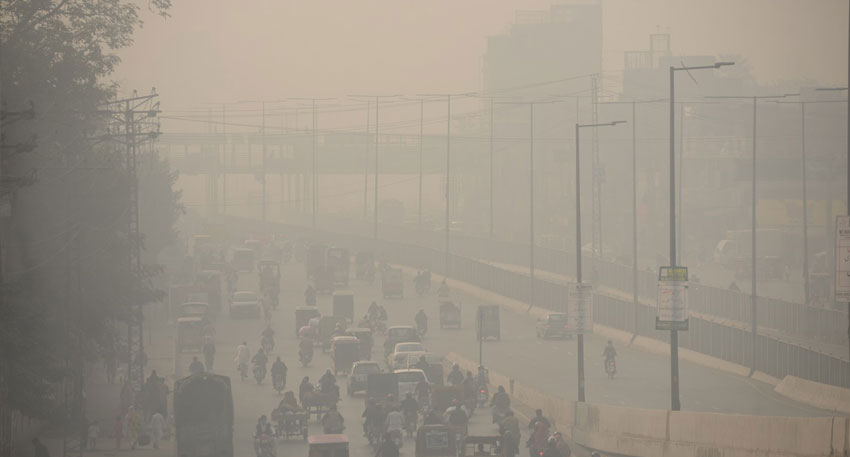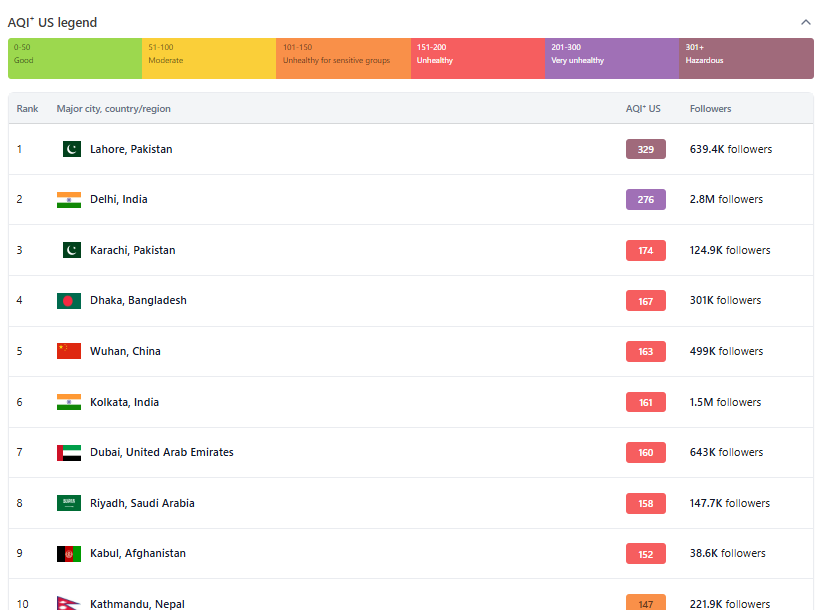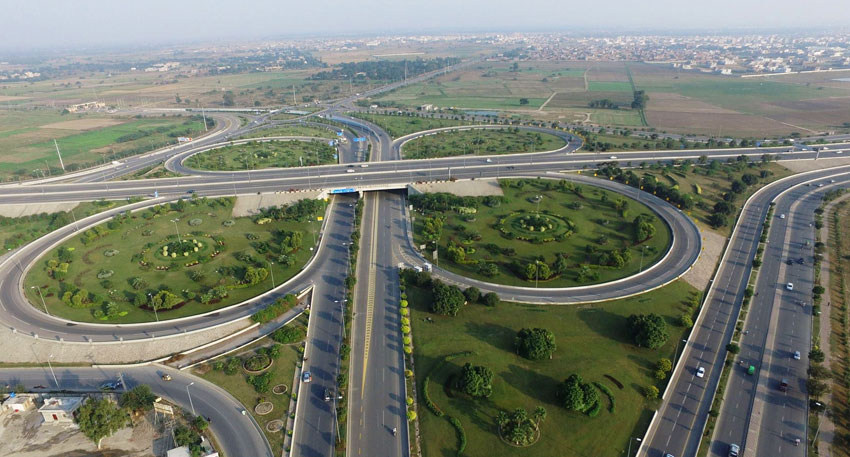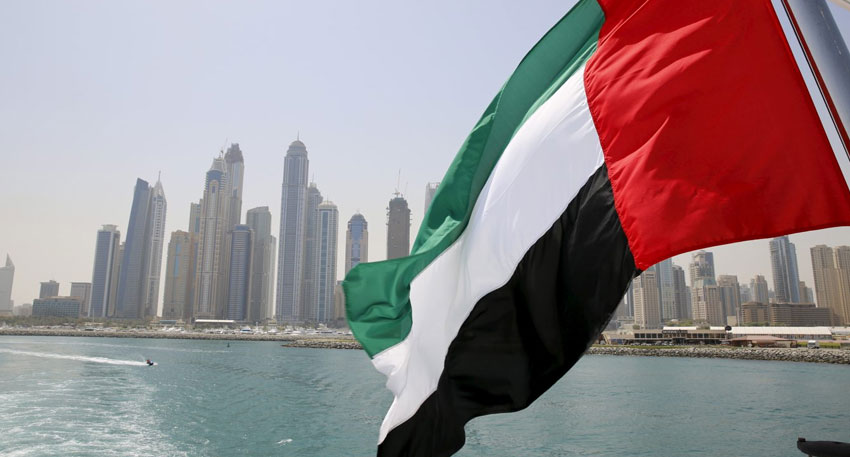
Earlier in the morning, Lahore’s AQI had spiked to a staggering 424, while the concentration of PM2.5 pollutants, fine particulate matter most harmful to human health — reached 287 µg/m³, posing serious risks to residents.
Punjab’s capital is not the only city facing alarming air quality levels. Karachi, the country’s financial hub, ranked third globally with an AQI of 174, categorized as “unhealthy”. Meanwhile, India’s capital New Delhi stood as the second most polluted city, recording an AQI of 276, rated “very unhealthy”.

The drastic decline in air quality coincides with the arrival of winter, a period when low temperatures, stagnant winds, and increased emissions from vehicles, industries, and crop residue burning trap pollutants close to the ground across Punjab.
Also Read: Hub canal closure to suspend water supply in major Karachi districts for 48 hours
Each winter, much of South Asia faces a similar pollution surge as cold air locks fine particles near the surface. Vehicle emissions, industrial discharge, construction dust, and agricultural burning all combine to create the persistent blanket of smog that lingers for weeks.
Health experts have sounded the alarm, warning that long-term exposure to such toxic air can cause heart disease, stroke, lung cancer, and chronic respiratory problems, posing a major public health threat for millions across the region.




